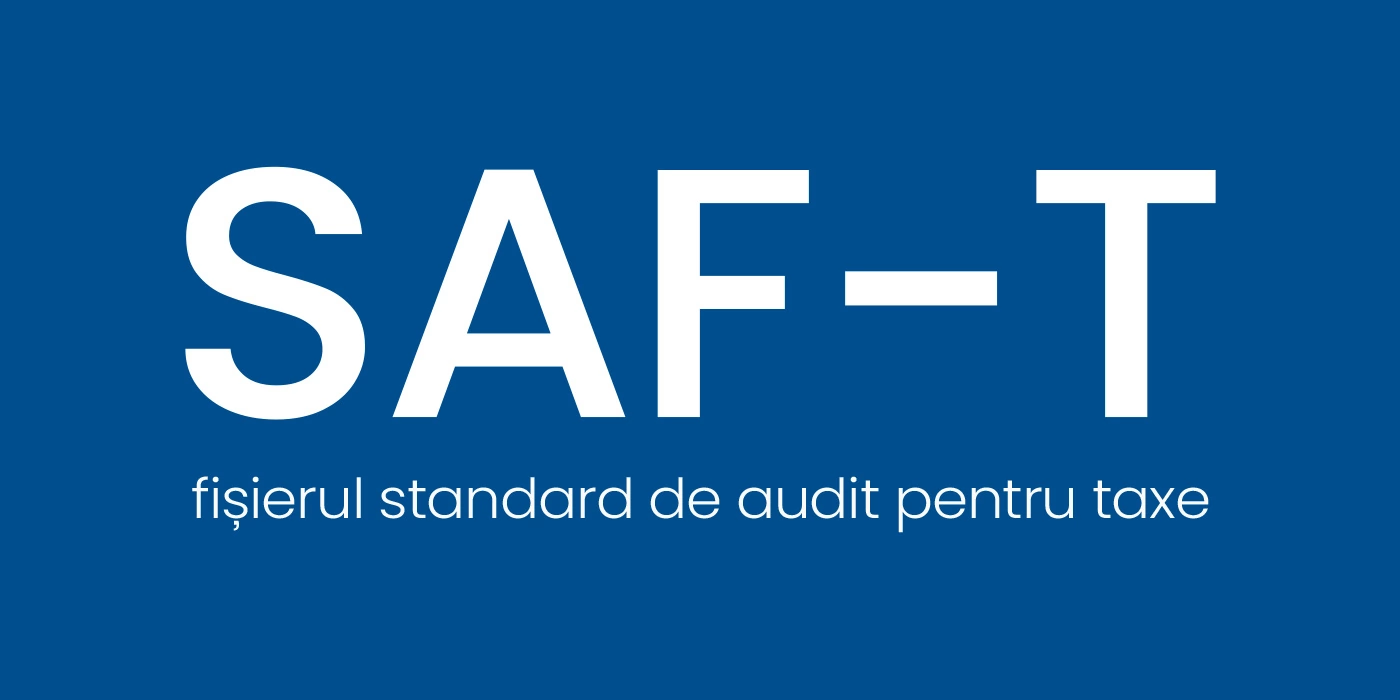All small companies will be required to submit the SAF-T (D406) declaration starting in 2025.

We are sending you an update regarding the SAF-T (D406) declaration which will become mandatory from 2025 for small companies as well.
Please review the information below to clarify any questions you might have and, especially, to discuss any specific clarifications
related to your business with one of FINACO's consultants.
Brief History
SAF-T is a Standard Audit File for Tax in XML format, designed by the OECD (Organization for Economic Co-operation and Development) in 2005, and serves to facilitate the exchange of electronic information between organizations and tax authorities in a standardized format.
In Romania, the SAF-T reporting obligation is introduced gradually as follows:
- Starting from January 2022, for large taxpayers
- Starting from January 2023, for medium-sized taxpayers
- Starting from January 2025, for small taxpayers
ANAF classifies taxpayers as small, medium, and large for tax administration purposes, with the list published annually.
The regulatory framework for SAF-T can be found in the Fiscal Procedure Code at art. 591 and in ANAF Order 1783/2021. Additionally, on ANAF's website, there is a dedicated SAF-T section: About ANAF / ANAF Strategies / Digitalization Projects / SAF-T, where you can also download a guide for preparing and submitting the declaration.
The SAF-T file in XML format is submitted electronically through the D406 informative fiscal declaration.
Purpose of the SAF-T Declaration
- SAF-T allows Tax Authorities direct access to accounting and fiscal records, quick analysis of declared taxes compared to taxes resulting from recorded transactions, and enables real-time supervision and fiscal control.
- SAF-T will be used as a working tool by ANAF for determining fiscal risk, including the approval of VAT refund requests.
- If, following the data analysis, errors or deviations from fiscal norms are detected, ANAF is entitled to issue a Fiscal Compliance Notification, and the targeted party is required to respond within 30 days, otherwise, a fiscal inspection may be initiated to clarify the situation.
- ANAF has the ability to automatically verify and recalculate tax bases and reported taxes.
Key Aspects
- All information transmitted in the SAF-T file is encoded in a standardized format, such as: chart of accounts, units of measurement, addresses, regions, countries, tax codes, IBAN accounts, tax and duty codes, VAT codes for all purchases and sales, 8-character combined nomenclature for goods, etc.
- If the data is not set and organized according to requirements, the XML file cannot be validated, and the fiscal declaration cannot be registered.
- Penalties for non-submission of the declaration, submission of erroneous data, or late submission range from 500 to 5000 lei (art. 3371 – Fiscal Procedure Code).
- The status of employees is not declared in SAF-T; such information is reported in declaration 112.
Recommendations
To comply with SAF-T reporting requirements, we recommend the following steps:
- Identify and analyze the IT solution used.
- Set all nomenclatures and verify the accuracy of the configured data.
- Organize data and registers in accordance with SAF-T reporting requirements.
- Analyze the data communicated to ANAF through the SAF-T file with the data communicated in fiscal declarations, e-invoice, e-transport, goods import, cash registers.
- Establish working procedures that allow easy identification and correction of non-compliances or errors and ensure communication with tax authorities within a reasonable timeframe.
For financial accounting assistance, request a meeting with one of our consultants.




